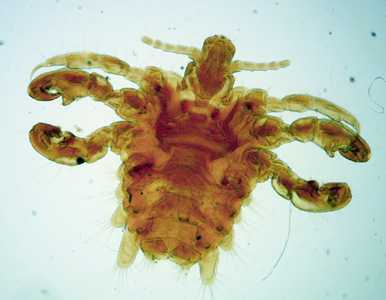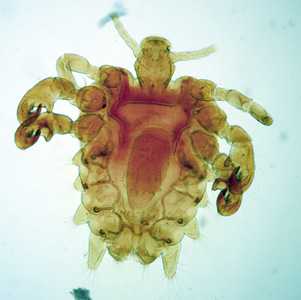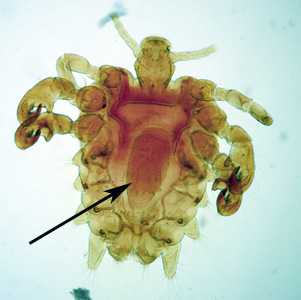
Case #292 - February, 2011
Upon returning from a week-long business trip to Las Vegas, a 35-year-old man found what appeared to be insects among various articles of clothing. Due to the recent heightened awareness of bed bugs in hotels, he decided to bring the insects to the local extension office for identification help. The specimens, which measured on average 2 mm in length, were cleared and mounted in balsam for identification by the state entomologist. Figures A and B show two of the specimens. What is your diagnosis? Based on what criteria?

Figure A

Figure B
Case Answer
The organisms shown in this case were the pubic louse, Pthirus pubis. Diagnostic morphologic features included:
- a size range compatible with P. pubis.
- the presence of six legs ending with tarsi adapted for gripping hair shafts.
- the presence of antennae, which ruled-out ticks and mites.
The specimen in Figure B was a gravid female, as an egg could be seen within her body (arrow, Figure B).

Figure B
More on: Pthiriasis
Images presented in the monthly case studies are from specimens submitted for diagnosis or archiving. On rare occasions, clinical histories given may be partly fictitious.
DPDx is an education resource designed for health professionals and laboratory scientists. For an overview including prevention and control visit www.cdc.gov/parasites/.
- Page last reviewed: August 24, 2016
- Page last updated: August 24, 2016
- Content source:
- Global Health – Division of Parasitic Diseases and Malaria
- Notice: Linking to a non-federal site does not constitute an endorsement by HHS, CDC or any of its employees of the sponsors or the information and products presented on the site.
- Maintained By:


 ShareCompartir
ShareCompartir